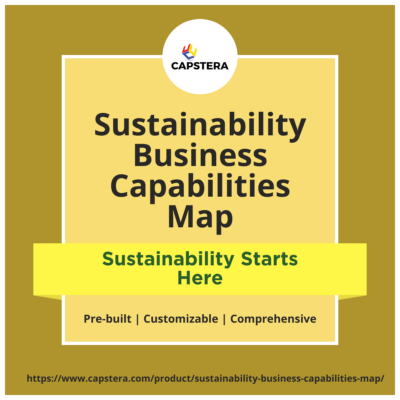
The whitepaper is a deep dive into the corporate sustainability imperative. Sustainability is not merely a buzzword; it’s a critical framework guiding the future of business and society. It encompasses a harmonious blend of economic, social, and environmental practices that ensure long-term resilience and success. In 2020, 71% of the 250 largest companies in the world reported in accordance with the Global Reporting Initiative (GRI) standards, reflecting a growing commitment to sustainable operations. However, despite this apparent dedication, many corporations are still grappling with translating sustainability concepts into tangible actions.
The Challenge of Much Talk and Not Much Action
It’s an age-old predicament: much has been said about sustainability, but translating words into meaningful action has proven more elusive. A 2021 survey by McKinsey found that while 83% of global executives state sustainability is important to their business strategies, only 36% have integrated sustainable practices into their operations.
For example, many companies proudly announce their intentions to reduce emissions but fail to set clear, quantifiable targets. Others may launch one-off sustainability initiatives without a long-term vision or concrete plans to integrate them into the core business strategy. Such disjointed efforts can lead to accusations of “greenwashing” or can be seen as mere marketing tactics, thus eroding public trust.
Corporate Sustainability at an Inflection Point
Today, corporate sustainability is at an inflection point. Governments, shareholders, and consumers are demanding more than mere lip service. With the Paris Agreement aiming to limit global warming to well below 2 degrees Celsius, companies are under pressure to align their strategies with this global target. Major investors, controlling trillions of dollars in assets, are increasingly screening for environmental, social, and governance (ESG) performance. The Larry Fink’s annual letter to CEOs in 2021 explicitly called for a purpose-driven approach to business, signaling a significant shift in investor expectations.
Simultaneously, market dynamics are changing. Companies like Tesla, which has positioned itself as a sustainability leader, have demonstrated that sustainability can be a core part of a profitable business model. In contrast, traditional companies like ExxonMobil, slow to adapt to sustainable practices, have seen their market values decline.
The corporate world’s commitment to sustainability must evolve from a theoretical idea to a strategic imperative. With regulatory pressure increasing, consumer demand shifting, and investors scrutinizing sustainability more critically, now is the time for corporations to act decisively. The path towards sustainable business is fraught with challenges but is also ripe with opportunities for those willing to embrace change, innovate, and lead by example.
The Corporate Sustainability Imperative
Corporate Sustainability Definition
 Sustainability refers to the practice of meeting the needs of the present without compromising the ability of future generations to meet their needs. In a business context, this means operating in a manner that ensures long-term economic viability, social responsibility, and environmental stewardship. The triple bottom line, encompassing social, environmental, and financial considerations, serves as a useful framework for understanding corporate sustainability.
Sustainability refers to the practice of meeting the needs of the present without compromising the ability of future generations to meet their needs. In a business context, this means operating in a manner that ensures long-term economic viability, social responsibility, and environmental stewardship. The triple bottom line, encompassing social, environmental, and financial considerations, serves as a useful framework for understanding corporate sustainability.
Historical Background
The concept of sustainability has deep historical roots, but it became prominent on the global stage in 1987 with the publication of the Brundtland Report. The report emphasized the importance of sustainable development and served as a catalyst for international dialogue.
In 1992, the Earth Summit in Rio de Janeiro laid the groundwork for future international environmental agreements, and by the early 2000s, sustainability had begun to influence corporate strategy. Pioneers like Interface, a carpet manufacturer, showed the business world that sustainable practices could enhance both profitability and social responsibility.
Relevance in the Modern Business Environment
Today, sustainability is not merely an optional corporate social responsibility program; it’s a business imperative. Companies recognize that sustainable practices lead to benefits such as:
- Risk Mitigation: By considering environmental and social factors, businesses can anticipate and mitigate risks, including regulatory compliance and reputation management.
- Cost Savings: Implementing energy-efficient practices can lead to substantial cost savings. For example, General Electric’s Ecomagination initiative saved the company $5 billion in energy costs between 2005 and 2017.
- Increased Consumer Loyalty: A Nielsen report in 2018 found that 81% of global respondents feel strongly that companies should help improve the environment.
Global Trends and Regulations
Sustainability is no longer confined to a single region or industry. It’s a global movement. Key trends and regulations include:
- Paris Agreement: Adopted in 2015, this global initiative aims to reduce greenhouse gas emissions to limit global warming.
- Sustainable Development Goals (SDGs): Set by the United Nations in 2015, these 17 goals provide a shared blueprint for peace and prosperity for people and the planet.
- Growing Investor Focus on ESG: Investors manage over $30 trillion in ESG assets, according to a Global Sustainable Investment Alliance report from 2018.
- Circular Economy: More businesses are embracing a circular economy model, aiming to minimize waste and make the most of resources. For example, Unilever committed to making all its plastic packaging recyclable, reusable, or compostable by 2025.
Sustainability is not a new concept but has evolved to become a core consideration for modern businesses. With a rich history that has shaped current practices, sustainability is now at the forefront of business strategy, driven by a combination of consumer demands, global trends, and stringent regulations. The path toward sustainability offers not only a moral and ethical imperative but also significant opportunities for innovation, growth, and competitive advantage.
The Corporate Sustainability Imperative
Environmental Impact
The environmental consequences of business operations place a significant burden on the planet, making the pursuit of sustainability non-negotiable.
- Climate Change: The Intergovernmental Panel on Climate Change (IPCC) warns that we must cut emissions by 45% by 2030 to keep global warming to 1.5°C. Corporations play a vital role here. Microsoft, for instance, has committed to being carbon negative by 2030, recognizing its responsibility to reduce its carbon footprint.
- Resource Depletion: The over-extraction of natural resources like water and minerals leads to scarcity. Companies like Nestlé have started water stewardship initiatives to manage the resource more sustainably.
- Biodiversity Loss: The loss of species and ecosystems threatens the balance of nature. Unilever’s Sustainable Agriculture Code is an example of a corporate strategy to promote biodiversity through responsible sourcing practices.
Social Impact
Corporate sustainability extends beyond the environment, including profound social implications:
- Community Development: Corporations can contribute to local communities by supporting education, healthcare, and infrastructure. IBM’s Corporate Service Corps, for example, helps communities around the world build capacity and address critical challenges.
- Employee Welfare: A commitment to fair labor practices, diversity, and inclusion leads to a more engaged workforce. Salesforce’s 1-1-1 model of philanthropy includes donating 1% of products, 1% of equity, and 1% of employees’ time towards community service.
Economic Impact
Sustainability also translates to tangible economic benefits for corporations:
- Long-term Profitability: Sustainable practices often lead to cost savings and new revenue streams. Toyota’s focus on hybrid technology, for example, not only reduces emissions but has also resulted in sales exceeding 15 million units as of 2020.
- Risk Management: Understanding and mitigating sustainability risks can prevent long-term losses. BP’s Deepwater Horizon oil spill in 2010 resulted in over $65 billion in costs, emphasizing the economic imperative of responsible environmental management.
Regulatory Compliance
 With governments worldwide implementing stringent regulations around sustainability, compliance is not an option; it’s a necessity. The European Union’s Circular Economy Action Plan, for instance, lays out measures to ensure that products are designed to last longer, and waste is minimized. Corporations failing to adhere to such regulations face financial penalties and reputational damage.
With governments worldwide implementing stringent regulations around sustainability, compliance is not an option; it’s a necessity. The European Union’s Circular Economy Action Plan, for instance, lays out measures to ensure that products are designed to last longer, and waste is minimized. Corporations failing to adhere to such regulations face financial penalties and reputational damage.
Consumer Expectations and Market Trends
Modern consumers demand more than quality products; they want ethical and sustainable practices. A 2020 Capgemini Research Institute study found that 79% of consumers are altering their purchase preferences based on social responsibility, inclusiveness, or environmental impact. Brands like Patagonia, with a commitment to sustainable and ethical manufacturing, are increasingly preferred by conscious consumers.
The sustainability imperative for corporations is clear and multifaceted, encompassing environmental stewardship, social responsibility, and economic viability. Environmental impacts, from climate change to biodiversity loss, demand urgent action. Social impacts, including community development and employee welfare, call for a humane and equitable approach. Economic considerations, regulatory compliance, and evolving consumer expectations further underscore the need for an integrated, strategic commitment to sustainability. Corporations that recognize and act on this imperative are positioned not only to thrive but also to lead in an increasingly complex and interconnected world.
Sustainability Strategies for Corporations
The move toward sustainability is not a one-size-fits-all process. It requires careful planning, execution, and alignment with a company’s unique situation and global sustainability goals. Here’s how corporations can strategically approach sustainability.
Assessing Current Sustainability Performance
Understanding the existing sustainability performance is the first step in formulating a coherent strategy. Companies like PepsiCo utilize tools such as the Water Risk Monetizer to assess their current water usage and risks. This assessment forms a baseline to measure future progress and identify areas that need the most attention.
Developing a Sustainability Vision and Mission
A compelling vision and mission are essential for guiding sustainability efforts. Siemens, for instance, has articulated a clear vision of being carbon neutral by 2030, with a mission to empower customers to reduce their environmental footprint.
Creating a Sustainability Policy
A sustainability policy sets forth the principles and guidelines that steer a company’s sustainability efforts. IKEA’s comprehensive sustainability policy, covering everything from energy efficiency to ethical sourcing, is a standout example. This policy provides a clear framework for all of IKEA’s sustainability-related decisions.
In addition to sustainability policy, conducting a sustainability current state audit and then developing a sustainability capabilities matrix is an integral part of the strategy and roadmap.
Stakeholder Engagement
Sustainability affects various stakeholders, including customers, employees, suppliers, and communities. Ford Motor Company’s annual sustainability report, developed with extensive stakeholder input, is a testament to the value of this engagement. These insights can drive more effective and inclusive sustainability strategies.
Aligning with Global Standards and Frameworks
Corporations should align their strategies with internationally recognized standards and frameworks. Unilever’s Sustainable Living Plan aligns with the UN’s Sustainable Development Goals (SDGs), ensuring consistency with global efforts to address poverty, inequality, and environmental degradation.
Target Setting and KPI Development
Clear targets and key performance indicators (KPIs) ensure that sustainability efforts are measurable and accountable. Walmart’s Project Gigaton aims to reduce one billion metric tons of greenhouse gases from its global value chain by 2030. Such specific targets allow Walmart to measure progress and make necessary adjustments.
Integrating Sustainability into Corporate Culture
Sustainability should not be a peripheral concern but an integral part of corporate culture. Salesforce’s 1-1-1 model of philanthropy is not just a program but a reflection of the company’s core values. By embedding sustainability into the fabric of the corporate culture, companies can ensure that these principles guide every decision and action.
Implementing sustainability strategies requires a thoughtful and comprehensive approach. Assessing current performance provides a foundation, while a clearly articulated vision and mission guide the path forward. A robust policy, engaged stakeholders, alignment with global standards, well-defined targets, and integration into the corporate culture are all key components of a successful sustainability strategy. Corporations such as Siemens, IKEA, and Salesforce illustrate how these elements can be effectively combined to foster meaningful and lasting change. The result is not just compliance with external expectations but a genuine transformation that benefits the company, its stakeholders, and the world at large.
Roadmap to Achieve Sustainability
 A well-articulated roadmap is vital for a corporation aiming to achieve sustainability. This roadmap should encompass short-term initiatives, mid-term goals, long-term strategic planning, technological innovation, collaboration, and a robust system for monitoring and continuous improvement.
A well-articulated roadmap is vital for a corporation aiming to achieve sustainability. This roadmap should encompass short-term initiatives, mid-term goals, long-term strategic planning, technological innovation, collaboration, and a robust system for monitoring and continuous improvement.
Short-term Goals and Initiatives
Short-term goals focus on immediate changes and quick wins that can be achieved within a year or two.
- Energy Efficiency: Reducing energy consumption through initiatives like LED lighting, as done by Philips, can have immediate positive impacts.
- Waste Reduction: Implementing recycling programs or reducing packaging, like Coca-Cola’s goal to create packaging with 50% recycled content by 2030, can be initiated quickly.
- Employee Engagement: Training and encouraging employees to adopt sustainable practices, both at work and at home, can create immediate cultural shifts.
Mid-term Goals and Initiatives
Mid-term goals typically extend three to five years and may include:
- Supply Chain Sustainability: Companies like Apple are working to reduce emissions in their supply chain, with Apple aiming to become carbon neutral across its entire business by 2030.
- Investment in Renewable Energy: Google’s commitment to operate on 100% renewable energy showcases a mid-term goal that requires planning and execution over several years.
- Product Design Innovation: Developing products with reduced environmental impact, as seen with Adidas’s line of shoes made from recycled ocean plastic, may require a few years of research and development.
Long-term Goals and Strategic Planning
Long-term goals look beyond five years and involve strategic planning:
- Climate Neutrality: Committing to net-zero emissions, like Amazon’s pledge to be net-zero carbon by 2040, requires extensive planning and transformation.
- Sustainable Development Goals Alignment: Long-term alignment with the UN’s SDGs may necessitate restructuring business models and strategies.
- Ecosystem Restoration: Initiatives like afforestation or habitat restoration, such as Toyota’s commitment to plant one million trees by 2030, are inherently long-term in nature.
Technology Integration and Innovation
Embracing cutting-edge technology and innovation is crucial:
- Big Data and Analytics: Companies like IBM use data analytics to optimize resource consumption and waste management.
- Clean Technology: Investment in clean technologies, like Tesla’s focus on electric vehicles and energy storage, represents innovation driving sustainability.
Collaboration and Partnerships
- Industry Collaboration: The Sustainable Apparel Coalition brings together brands, retailers, and suppliers to reduce environmental and social impacts.
- Partnerships with NGOs: Partnerships with organizations like WWF can amplify impact, as seen with HP’s collaboration to promote responsible forestry.
Monitoring, Reporting, and Continuous Improvement
An effective sustainability roadmap includes continuous oversight:
- Regular Reporting: Companies like Unilever provide annual sustainability reports to keep stakeholders informed.
- Third-party Auditing: External audits, such as those conducted by PwC for many firms, ensure transparency and credibility.
- Adaptive Strategies: Continuous improvement involves regularly reviewing and updating strategies, as market leader Procter & Gamble does to stay aligned with evolving sustainability standards.
Achieving sustainability is a journey that requires a comprehensive and adaptable roadmap. From short-term goals to long-term strategic planning, every stage is crucial. Integration of technology, fostering collaboration, and continuous monitoring are all part of this multifaceted process. The roadmap to sustainability is neither simple nor linear, but with concerted effort, clear direction, and unwavering commitment, corporations can pave the way to a future where profitability and responsibility coalesce into a harmonious and sustainable business paradigm.
Case Studies and Best Practices
Understanding real-world applications, lessons learned, and the adaptation of sustainability strategies across different corporate contexts is essential for grasping the practicalities of corporate sustainability. The following section offers a glimpse into these aspects.
A. Successful Implementations of Sustainability in Various Industries
- Energy Industry – Ørsted: Once one of Europe’s most coal-intensive energy companies, Ørsted has transformed itself by investing in renewable energy. By 2021, they reduced their carbon emissions by 86%, aiming for complete carbon neutrality by 2025.
- Automotive Industry – Tesla: Tesla’s focus on electric vehicles has revolutionized the automotive industry. By offering high-performance electric cars, they’ve paved the way for a transition away from fossil fuels.
- Retail Industry – Unilever: Through its Sustainable Living Plan, Unilever has successfully reduced waste and water usage, improved health and well-being for millions, and sourced 56% of its agricultural raw materials sustainably as of 2020.
- Technology Industry – Microsoft: Microsoft has committed to being carbon negative by 2030 and has implemented comprehensive sustainability practices, including developing AI for Earth, a program supporting environmental innovation.
Lessons Learned
 Transparency is Key: The Volkswagen emissions scandal, where cheating on emissions tests was exposed, underlines the importance of transparency and honesty in sustainability efforts.
Transparency is Key: The Volkswagen emissions scandal, where cheating on emissions tests was exposed, underlines the importance of transparency and honesty in sustainability efforts.- Integration Across the Business: GE’s Ecomagination proved that aligning sustainability with business goals can drive growth, with $300 billion in revenues from 2005 to 2015.
- Stakeholder Engagement Matters: Starbucks’ collaboration with stakeholders in its Coffee and Farmer Equity (C.A.F.E.) Practices has led to 99% ethically sourced coffee, demonstrating the power of stakeholder engagement.
- Adaptation and Flexibility: The COVID-19 pandemic has shown that sustainability strategies must be flexible to adapt to unforeseen challenges. Companies like Johnson & Johnson quickly shifted resources to pandemic response, maintaining their commitment to broader sustainability goals.
Adapting Strategies to Different Corporate Contexts
- Large Corporations – IBM: IBM’s Corporate Service Corps (CSC) leverages its global presence to help communities worldwide, adapting sustainability strategies to various cultural and socioeconomic contexts.
- Small and Medium-sized Enterprises (SMEs) – Echogen Power Systems: This small company leverages waste heat recovery technology, showing that even SMEs can innovate and drive sustainability.
- Non-Profit Organizations – World Wildlife Fund (WWF): WWF collaborates with businesses to help them adopt sustainable practices, adapting strategies to various industries and sectors.
These case studies and best practices illustrate that sustainability is not a theoretical concept but a practical and achievable goal. Success stories from Ørsted, Tesla, Unilever, and Microsoft showcase how diverse industries can embrace sustainability. The lessons learned emphasize transparency, integration, stakeholder engagement, and flexibility. Moreover, the adaptation of strategies to different corporate contexts – from giants like IBM to SMEs like Echogen – demonstrates the universal relevance of sustainability. By studying these cases and lessons, corporations can find inspiration, guidance, and confirmation that sustainability is not only essential but entirely within reach.
Challenges and Risks
Achieving sustainability within a corporation is a complex process, often riddled with various challenges and risks. A closer look at these obstacles, strategies to overcome them, and potential risks with their corresponding mitigation strategies is essential for a well-rounded approach to corporate sustainability.
Common Obstacles in Implementing Sustainability
- Lack of Commitment from Leadership: Without buy-in from top management, sustainability initiatives can flounder. For example, Yahoo’s efforts stumbled when leadership changes led to shifting priorities away from sustainability.
- Insufficient Resources: Proper funding, staffing, and time are essential, and lacking any of these can stall progress.
- Cultural Resistance: If sustainability is seen as contrary to the existing corporate culture or values, resistance may ensue.
- Regulatory Complexity: Navigating the intricate landscape of international, national, and local regulations can be daunting, especially for multinational corporations.
- Supply Chain Challenges: Ensuring sustainability throughout the entire supply chain is often a complex task, as seen with Apple’s ongoing efforts to monitor and improve conditions at supplier facilities.
Strategies to Overcome Challenges
- Leadership Engagement: Executives must champion sustainability, as seen with Paul Polman, former CEO of Unilever, who was instrumental in driving their Sustainable Living Plan.
- Adequate Resourcing: Allocating appropriate funding, staffing, and time ensures that sustainability initiatives have the support needed to succeed.
- Cultural Alignment: Integrating sustainability into the corporate culture, as Salesforce has done with its 1-1-1 philanthropy model, can overcome resistance.
- Expert Guidance on Regulations: Employing or consulting experts in environmental law and regulation can simplify compliance, a strategy that companies like General Electric employ.
- Collaboration with Suppliers: Building partnerships with suppliers, such as the collaboration between Walmart and its global suppliers in Project Gigaton, can overcome supply chain challenges.
Potential Risks and Mitigation Strategies
- Reputational Risk: Greenwashing, or falsely conveying environmental responsibility, can lead to a public relations crisis. Transparency and authenticity, as Patagonia demonstrates, can mitigate this risk.
- Financial Risk: Poorly planned sustainability initiatives may lead to financial losses. Rigorous financial planning, as done by Siemens in its commitment to carbon neutrality, ensures financial viability.
- Regulatory Risk: Non-compliance with environmental regulations can lead to fines and sanctions. Regular compliance audits, as conducted by 3M, can prevent regulatory missteps.
- Operational Risk: Changes in operations to meet sustainability goals might disrupt regular business functions. As seen with Google’s gradual shift to renewable energy, pilot testing can help identify and resolve operational challenges.
Implementing sustainability within a corporation is a multifaceted task filled with challenges and risks. Understanding common obstacles such as leadership commitment, resources, cultural resistance, regulatory complexity, and supply chain challenges is the first step toward addressing them. Strategies to overcome these challenges can be found in successful implementations by companies like Unilever, Salesforce, General Electric, and Walmart. Identifying potential risks like reputational, financial, regulatory, and operational risks and employing mitigation strategies as practiced by Patagonia, Siemens, 3M, and Google ensures a well-rounded, resilient approach to corporate sustainability. It’s a journey filled with complexity but one that offers tremendous potential for positive transformation for the corporation and the broader world.
Summing Up the Corporate Sustainability Imperative
Recap of the Imperative, Strategy, and Roadmap
The path towards corporate sustainability is a complex but rewarding journey. This whitepaper has detailed the multifaceted imperative that includes the environmental impacts like climate change, resource depletion, and biodiversity loss, social influences on community development and employee welfare, and the economic considerations involving long-term profitability and risk management. Various strategies have been laid out, from assessing the current sustainability performance to integrating sustainability into the corporate culture. A roadmap, emphasizing short-term to long-term goals, technology integration, collaboration, and continuous improvement, has been delineated, with case studies and best practices providing real-world examples and insights. The challenges and risks were also examined, offering strategies to overcome them.
Encouragement for Corporate Commitment
Corporate sustainability is not just an ideal or a trendy catchphrase. It is necessary for the present and the future, a key to unlocking long-term profitability, resilience, and reputation. Companies like Ørsted, Tesla, Unilever, and Microsoft have proven that aligning business practices with sustainability is feasible and beneficial. Their successes underscore that the journey, though complex, is attainable. It requires commitment, innovation, and perseverance. By embracing this path, corporations can safeguard their futures and contribute positively to the global community.
Future Perspectives on the Corporate Sustainability Imperative
Looking to the future, sustainability will likely continue to gain prominence as climate change accelerates, resources become scarcer, and social and regulatory pressures intensify. Technological advancements, shifting consumer preferences, and emerging regulations will evolve the landscape. Adaptation and agility will be key, and those proactive rather than reactive corporations will lead the way.
The integration of Artificial Intelligence (AI), the Internet of Things (IoT), and other emerging technologies will open new horizons for efficient resource management and innovative solutions. Collaborations and partnerships will break down silos, and a holistic view of sustainability encompassing environmental, social, and governance factors will prevail.
In the words of former UN Secretary-General Ban Ki-moon, “Sustainability is the path to our future.” The time to embark on that path is now. Through conscious effort, collaboration, innovation, and an unwavering commitment to a sustainable future, corporations can help shape a world where economic growth and environmental stewardship go hand in hand, creating a lasting legacy for future generations.


